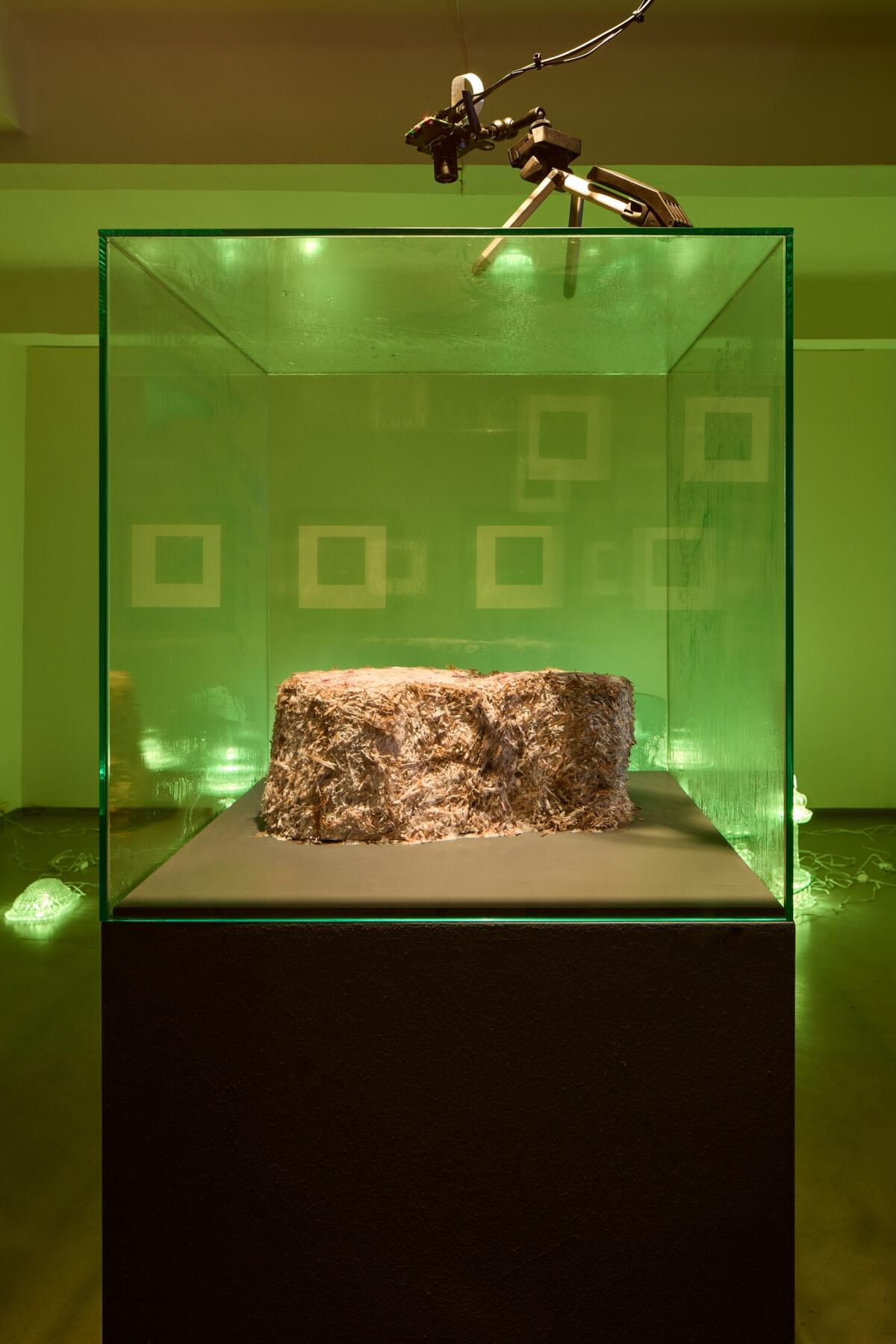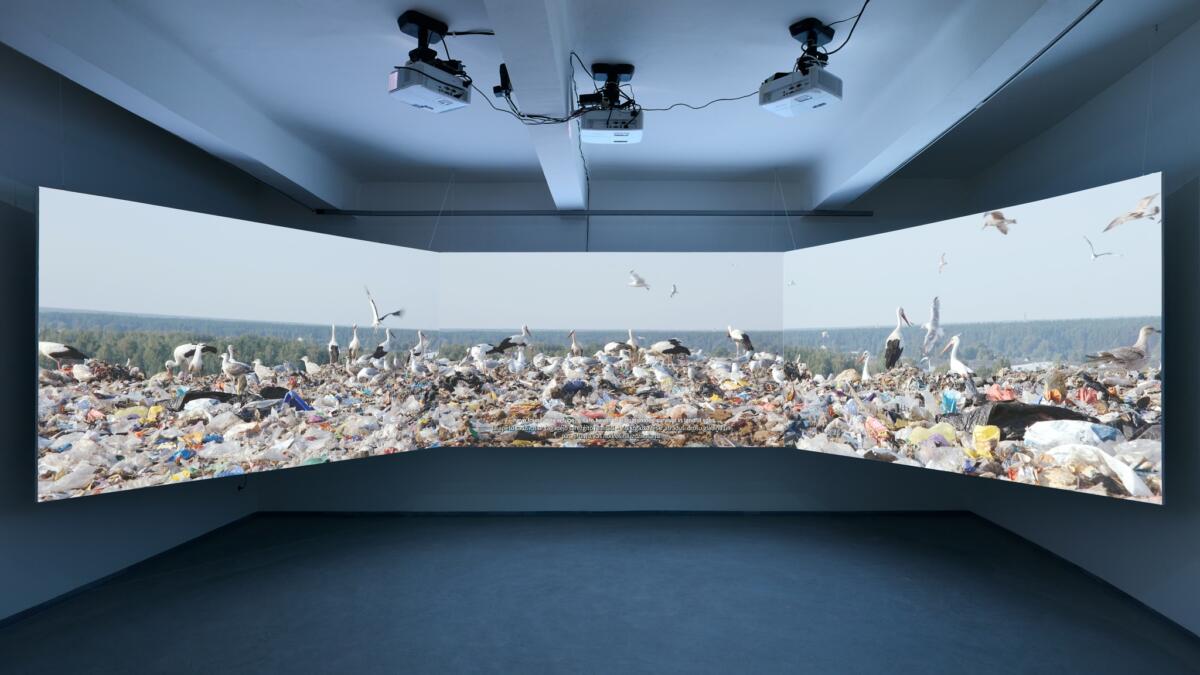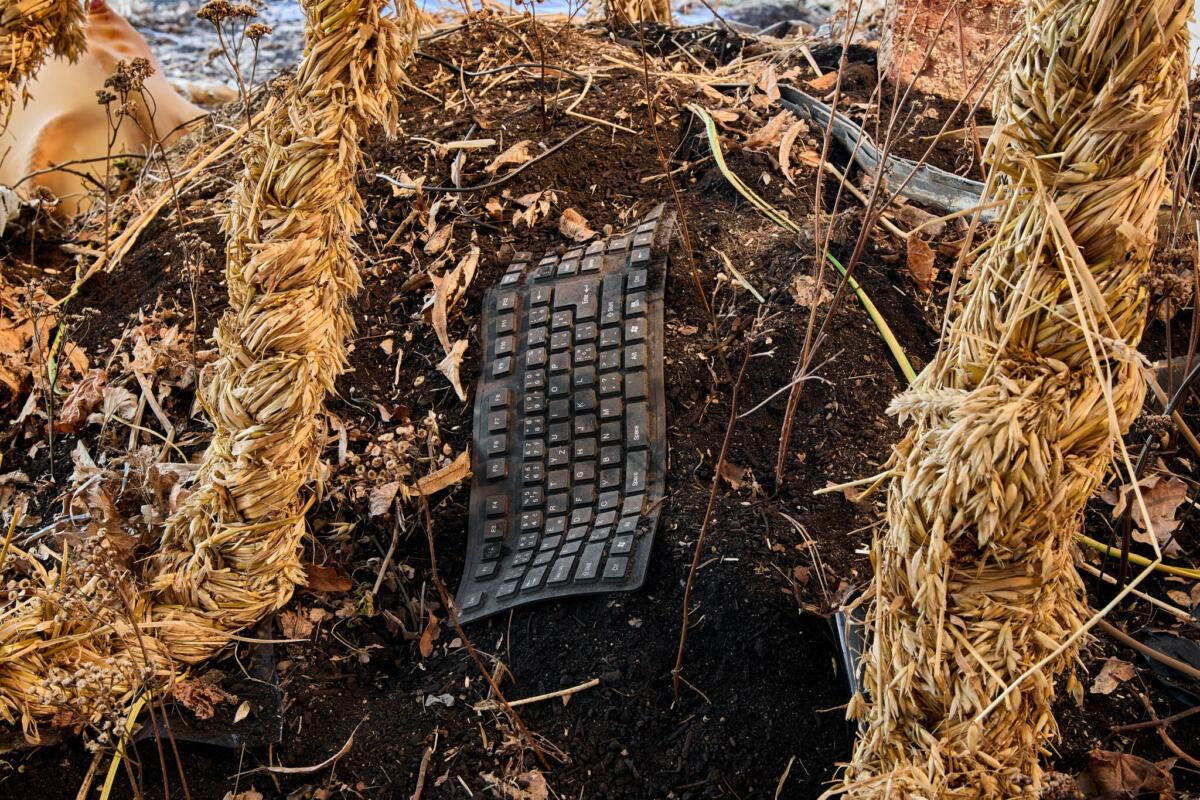
Zorka Ságlová created a daring installation/happening in Prague, in August 1969, at the Václav Špála Gallery. Titled Hay – Straw, she brought in bales of straw and alfalfa, and piles of still moist hay into the basement of the gallery space. They had to regularly turn the hay so it could dry, and they encouraged visitors to help them. The bales of straw were rearranged periodically, and visitors were also permitted to move or sit on them. As an installation in a respected gallery, this event, at that moment in time, was unprecedented, regardless of whether it was in a repressed socialist state or a democratic one.
The starting point for Hay, Straw, Dump (2023) a group exhibition of contemporary artists in the same gallery, which is remarkably still active in its original location on Národní street in central Prague, is documentation of the original installation, which includes four enlarged photos of the artist and friends sitting on top of Hay – Straw. There is also a poem-drawing by Ságlová made in the shape of a bunny composed of handwritten sentences in mystical English like, “the hare, as resurrection symbol, pounds the herb of immortality in the moon…..” This one has tender dabs of red and blue paint made by rabbit-footprints across the canvas.
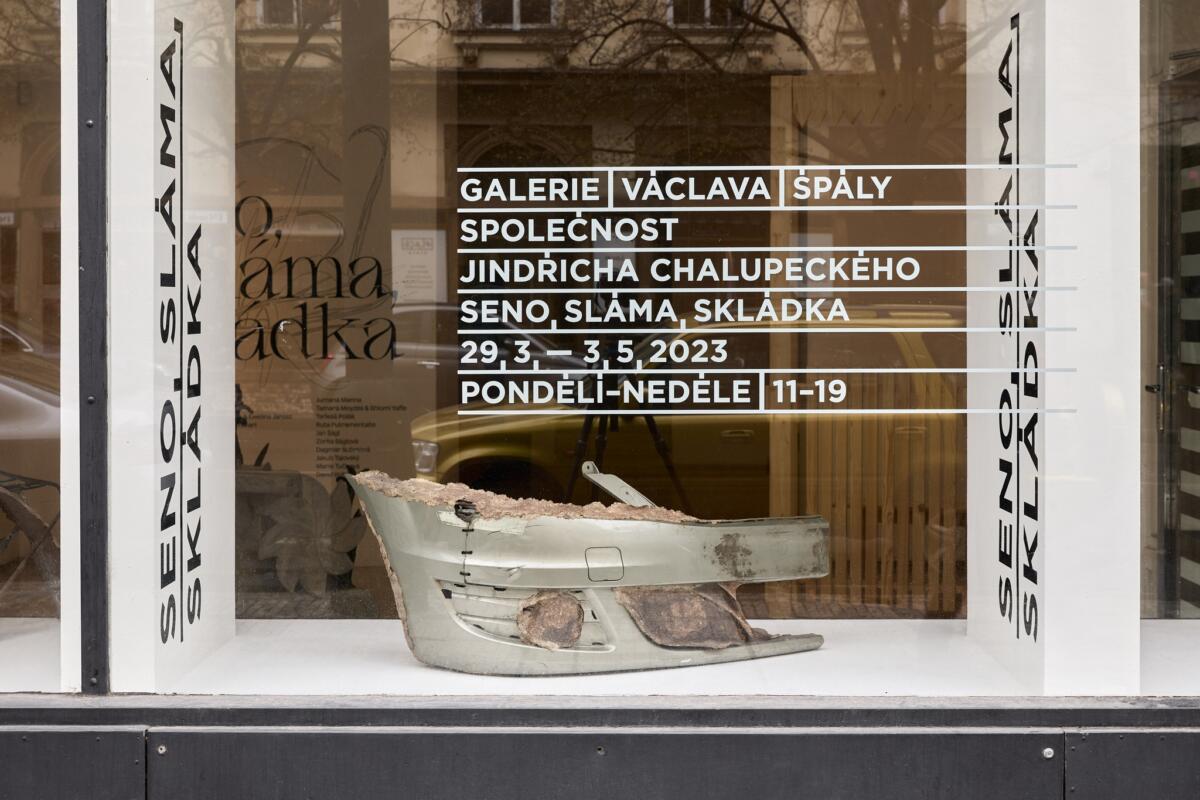

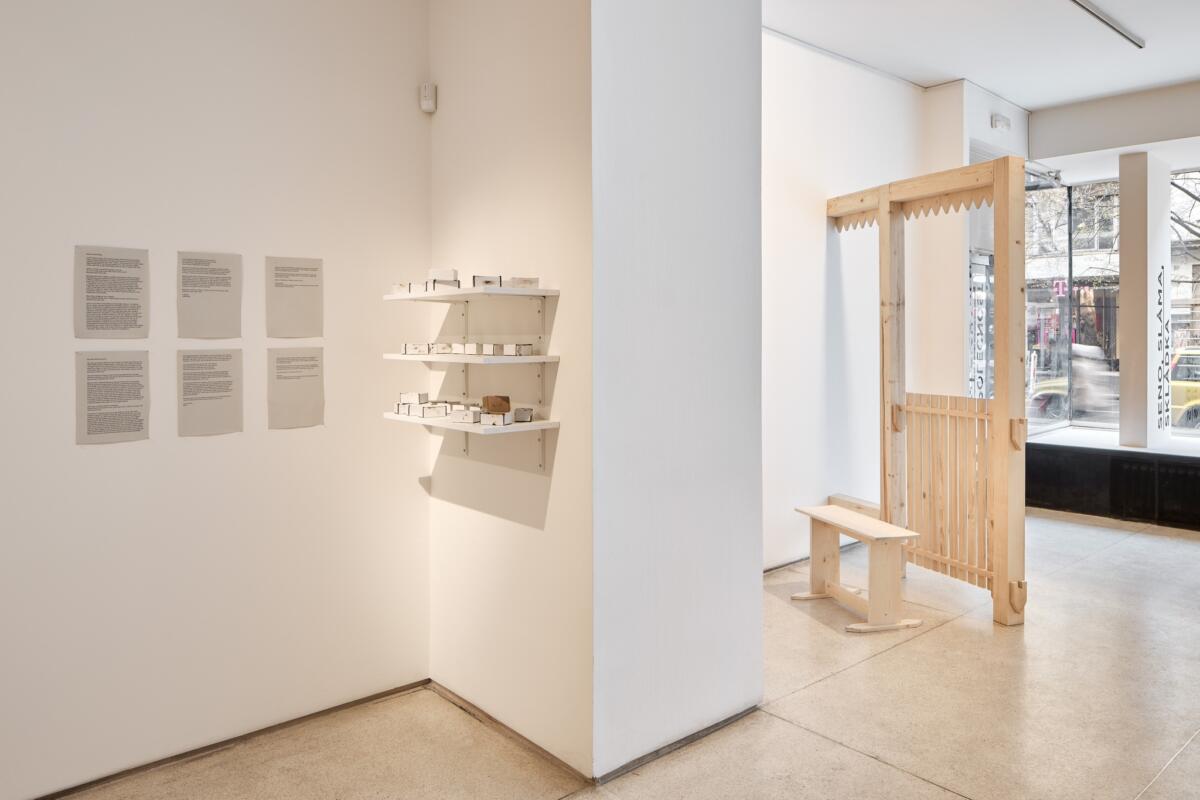
The exhibition was prepared by the Jindřich Chalupecký Society, as Chalupecký was the most progressive of curators and art critics in Czechoslovakia, having curated notable exhibitions at Václav Špála Gallery, including one with Marcel Duchamp in March-April 1969. Duchamp’s show was planned by Chalupecký but realized posthumously as the artist died in October 1968.
Similarly, in the shadow of Chalupecký’s encouragement for experimentation in the visual arts, Ságlová’s exhibition kept his spirit alive in close collaboration with her photographer husband Jan Ságl, hence the exceptional photo documentation of all of her works from that period. And it was only a part of the main exhibition in the three-floor gallery space, along with husband and wife visual poets Jiří Kolář and Běla Kolářová, titled Somewhere Something (Někde něco). Ságlová’s intention was an earnest one, merely to include the farm life of her own experience and to incorporate this for wider appreciation in an urban scenario. Her family’s connection to agricultural activities was also poignant as her uncle was one who had resisted the state’s collectivization of small farms.
Art critics of the era were not as scathing as one would expect, or at least based on the reviews displayed in the gallery for Hay, Straw, Dump. One reviewer warns visitors that the artists will give them a surprise, and that they should be prepared to witness new directions in contemporary art—it is explained rather as documentation of the artists’ living experiences (their reality). The same reviewer notes Robert Rauschenberg as the forefather of art happenings and compares the exhibition to Duchamp’s experiments in shifting the public’s perception of art. Ságlová’s installation is also referred to as a group effort, and for the critic, quite unbelievably as a psychedelic event held by a group of beatniks in the gallery space. However in 1972, the art theorist Luboš Hlaváček referred most critically in retrospect by calling it a “Hay Dump.” This term is another inspiration for the 2023 exhibition.
This historical introduction is only for the purpose of better understanding the intention of the curators, for the benefit of those not familiar with 20th century Czech art history and politics, and to contextualize the works of the 20 contemporary European artists included in Hay, Straw, Dump (besides Ságlová and Ságl): Anna Hulačová, Ruta Putramentaite, Martin Hurych, Tadeáš Polák, Ines Doujak, Jumana Manna, Tamara Moyzes & Shlomi Yaffe, Hanna-Maria Hammari, Diana Lolonek, Věra Kotlárová-Chovancova, Michal Kindernay, Dagmar Šubertová, Marie Tučková, Justyna Górowska & Ewelina Jarosz, David Vojtuš, Jakub Tajovský, Nicola Brabcová, and Petra Janda.
The theme of Hay, Straw, Dump is a reflection on the artists’ (or our own) relationship with nature in contemporary society. It is also an inquiry into how we perceive or maybe are not even aware of, ongoing environmental destruction and ecological devastation, and its related social impacts.
In the first room besides Ságlová and Ságl, there is Engine with Irises (2023), a sculpture resembling a tractor engine by Anna Hulačová made in light grey concrete and metal with darker grey ceramic irises rising through the engine like living pistons. There is also a nagging voice of an elderly Czech woman hanging in the air. The Pit (2023) is a sound installation by Martin Hurych, a recording of his grandmother reciting her daily chores while in the village tending to her farm. She reads off lists of vegetables and fruits from her garden and shares her recipes while also gossiping about neighbors. Overall it is an endless ramble that can become unbearable.
The first room of the Václav Špála Gallery is on the ground-floor with large street-facing windows. Ruta Putramentaite takes full advantage of this opportunity with her work here all is distance there it was breath (2022), an installation of sculptures made from metal debris, wood, plastic, and layers or skins of paper mache and soil. These are reminiscent of Duchamp’s ready-mades, but her deformed bike frames and car fender are so deteriorated that it seems their skins have seen the ages.
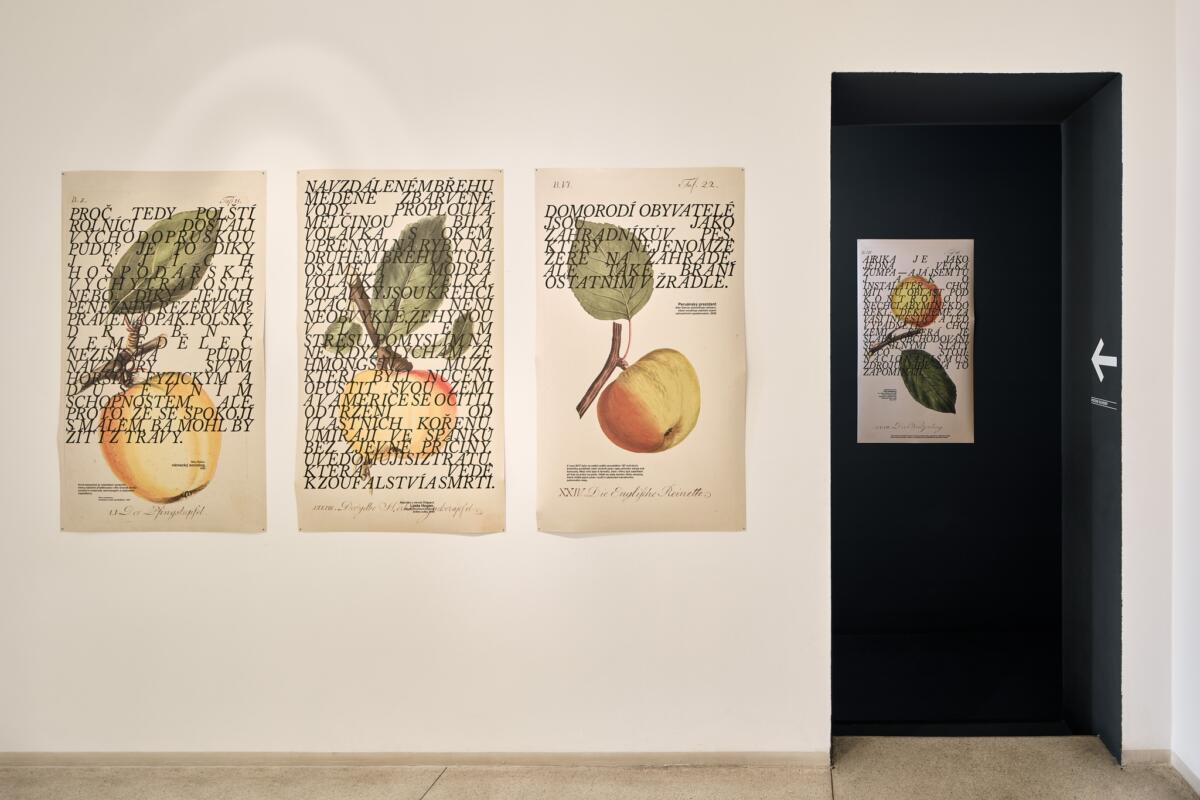
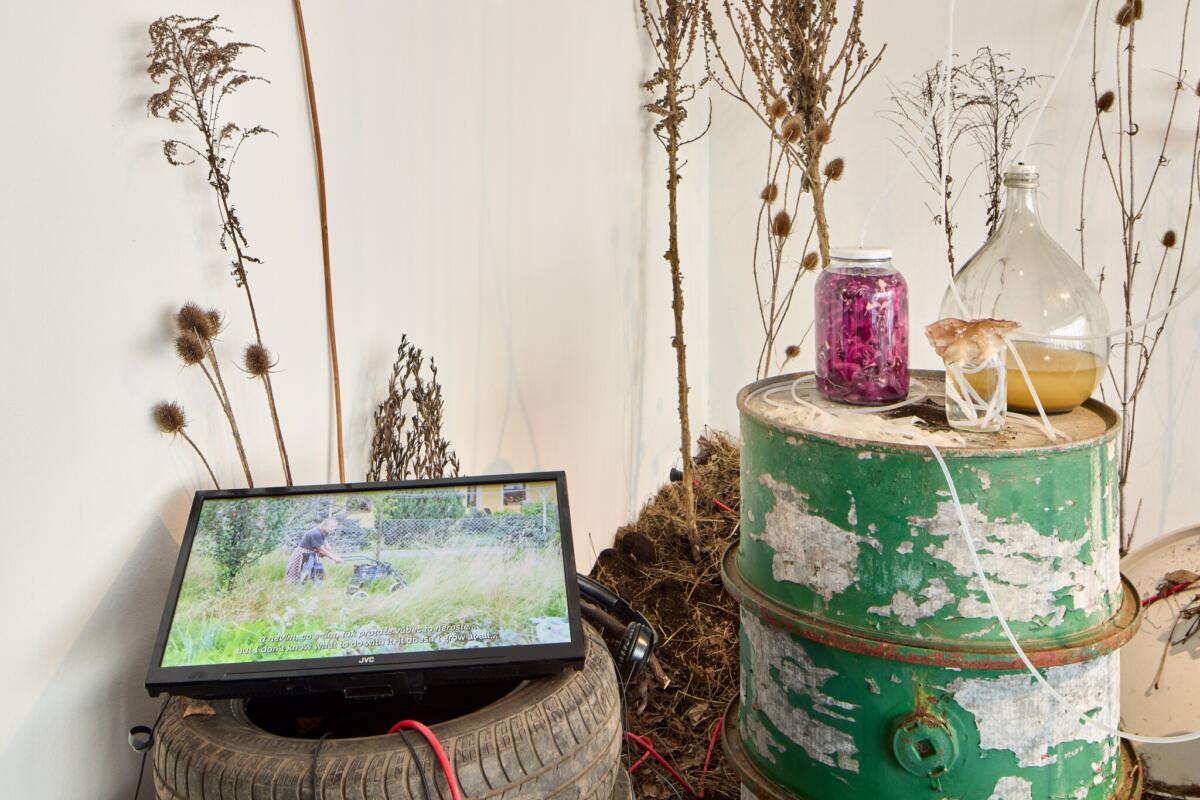
There are many sections throughout the gallery for individual display areas, and at least one more on the ground floor is hard to ignore: Ghost Populations (2021) is a surrealist collage of a horrific jungle mutant disfigured by unknown chemical pollutants, and Land Grabs (2018/2023) is a series of posters, both works by Ines Doujak. Her posters were first made in 2018 but have been updated for this exhibition. So there are posters showing apples hanging from branches and in the background are handwritten quotes in German or Czech from various regions and historical periods, referring to land acquisitions made at the expense of indigenous people.
One of these posters says in handwritten text, “So why do Polish peasants get East Prussian land? Is it because of their economic wit or their money reserves? Quite on the contrary. The Polish small farmer does not get land in spite of his inferior physical and mental abilities, but because he is content with little, and could even live on grass.” Another one says “Indigenous people are like a gardener’s dog, they do not only eat from the garden, but they also prevent others from eating.” This quote is attributed to the former two-term Peruvian president Alan Garcia, who used this to justify an executive order allowing the taking of lands from indigenous peasants (i.e. indios) by foreign corporations.
The inclusion of these posters reveals much broader, or even global-scale land acquisitions from historical periods beyond the socialist era of Eastern Europe, so the saga of Ságlová’s family farm can be compared to the ongoing extermination of peoples on other continents in the name of privatized land grabs.
In the downstairs space of the gallery is a video installation on three large screens by Diana Lelonek, placed where Ságlová originally had her hay and straw installation. Storks, a Sacred Bird (2022) is a ten-minute video that tells the true story of storks stuffing themselves with refuse from the largest open landfill in Europe, near Riga. The serious tone of the English-language moderator is used to educate the viewer about the habitat of the open dump and the dependence that scavenger storks have developed; they have become fast-food junkies, feasting on an ever replenished pile of trash, thus altering their natural instincts and activities for survival.
Lelonek’s video at times can become too didactic with comments about the storks as a collective “struggling to find its place in the neoliberal capitalist structure,” but her message is resurrected with Dump, a sprawling, site-specific installation on the gallery’s top-floor. This piece includes composted soil that has been spread across the floor in piles throughout two big rooms with dried leaves, chunks of wood or branches, and found objects and materials (debris) from Polish and Czech junkyards. The top floor is thus transformed into an urban junkpile engulfed in dirt/soil.
Placed within Dump, as interventions, are many more works by other contributing artists including intricate drawings on beech boards, Still Figure and Still Figure II (2020) by Jakub Tajovský, oval-shaped linocuts from recycled plastic (though it resembles wood) by David Vojtuš (two untitled works and one with a patent as RECYFIX HICAP F1000 (2023), and across the floor, intricately wrapped straw as sculptures, Regina (2022) by Petra Janda. There are Michal Kindernay’s rocks and tree stumps oozing in sound, Dagmar Šubertová’s camouflaged photos and digital (thermal) images stuffed in a trash bin with genuine refuse (Secret Fire, 2007) and (New Wilderness, 2006-2013), and more videos (with one screen thrown on the ground).
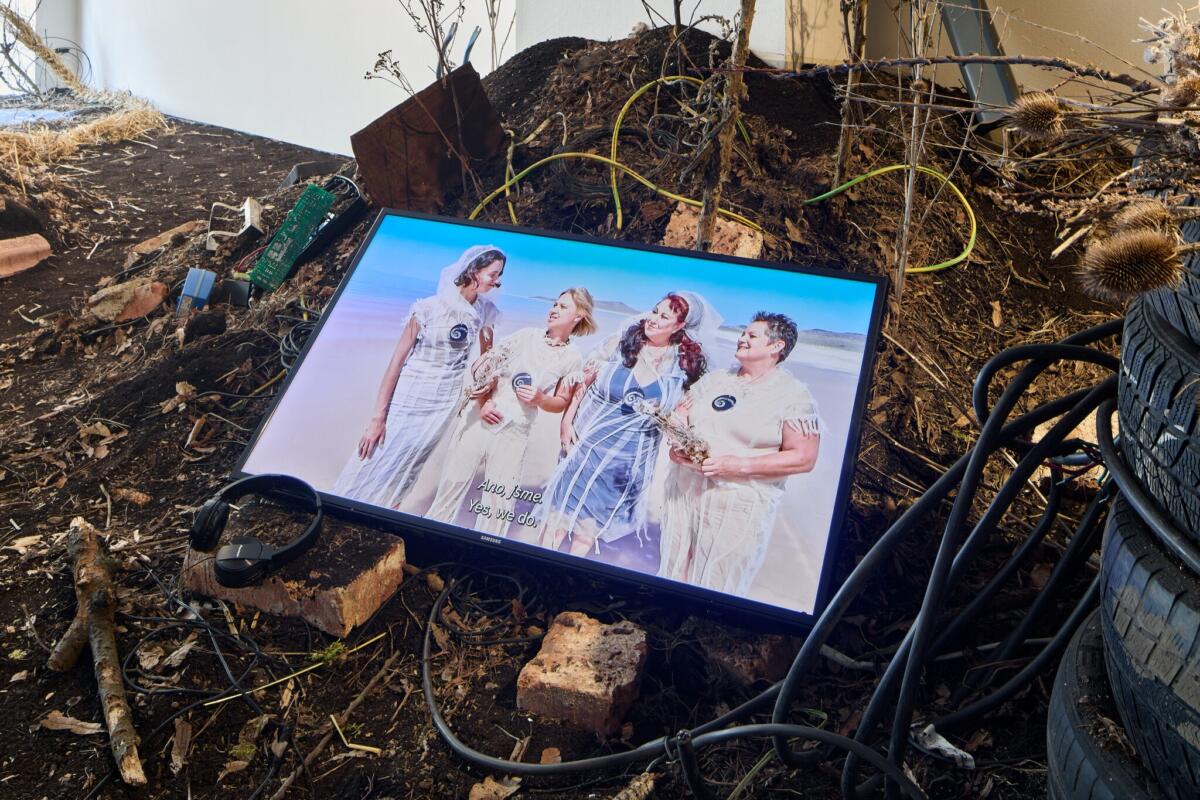
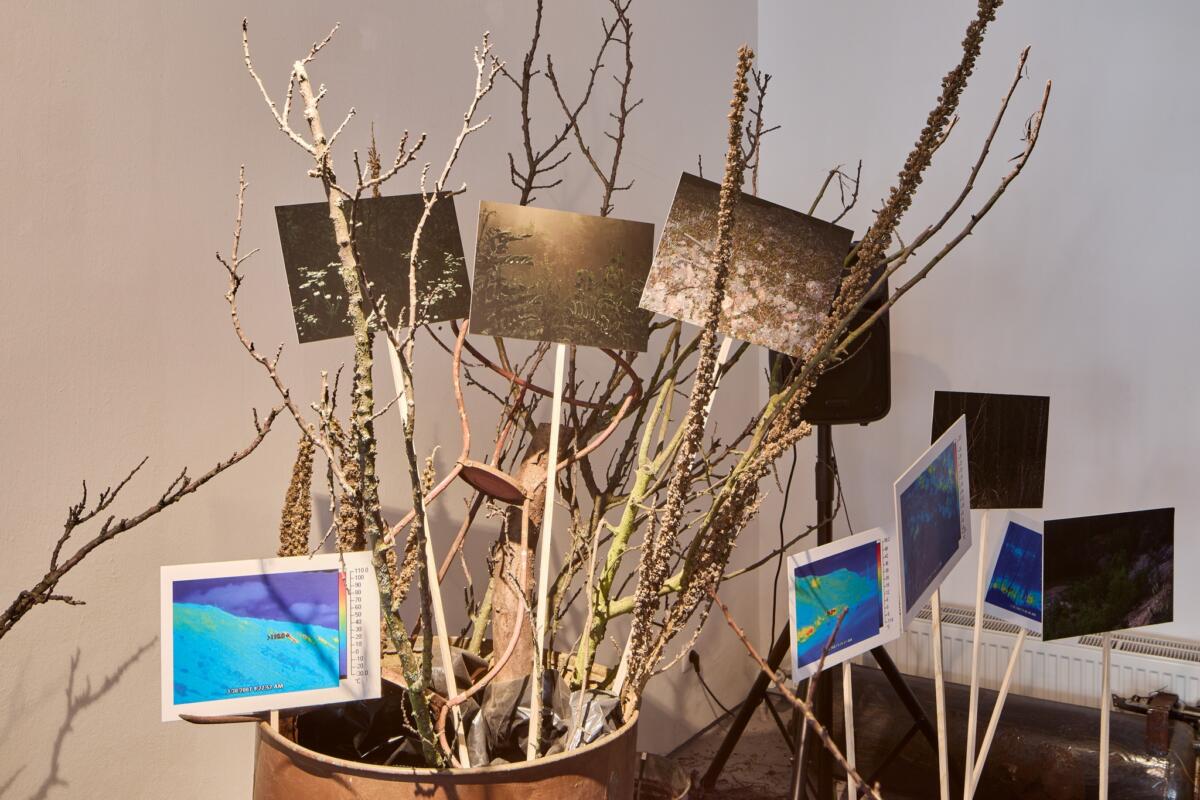

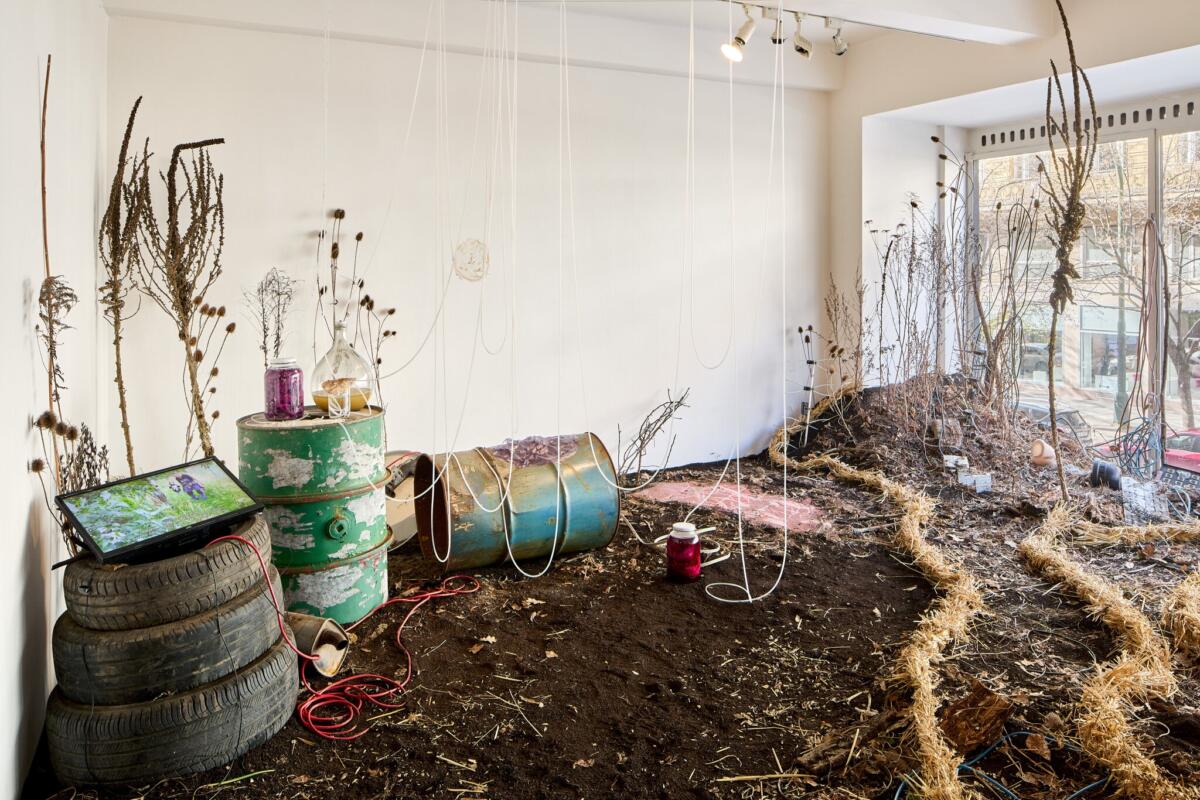
Besides Lelonek, two other Polish artists are highlighted here, even if they are immersed or even submerged in Dump. Justyna Górowska & Ewelina Jarosz appear in a video smothered in dust over the screen titled Cyber wedding to the brine shrimp (2021). This piece, also featuring the performance artist and sexologist Annie Sprinkle Ph.D., who became most popular in the 80s by embracing her sexuality as an eco-feminist and artist while reflecting on previous jobs, such as a stripper and pornographic actress. In this video, Górowska & Jarosz along with Sprinkle and her partner Beth Stephens, with a small group of their friends, have a mock-wedding ceremony with brine shrimp (otherwise known as sea monkeys). This upbeat ritualistic performance of ecosexuality occurs at the site of Robert Smithson’s famous Spiral Jetty, in a remote area of the Great Salt Lake in Utah. Smithson’s Spiral Jetty is a hallowed earthwork sculpture made in 1970, but it is hardly idealized by Górowska & Jarosz. Instead, they point out the suffering of the indigenous brine shrimp of the Great Salt Lake, thus the negative ecological impact of Smithson’s admittedly megalomaniac activity in the name of Land Art.
While Górowska & Jarosz best represent a refreshing attitude with not only an appreciation but genuine love for nature (pursued in their contemporary art activities), they are also reconnecting to a not dissimilar affinity to nature as explored in the installation by Zorka Ságlová. Such works are both partly done in jest with dadaistic flair, by eschewing propriety and art traditions. And the overwhelming accumulation of artworks amid the dust, dirt, thistle, dried weeds and junk succeeds similarly as the main attraction, even if only partially visible from the street and sidewalk.
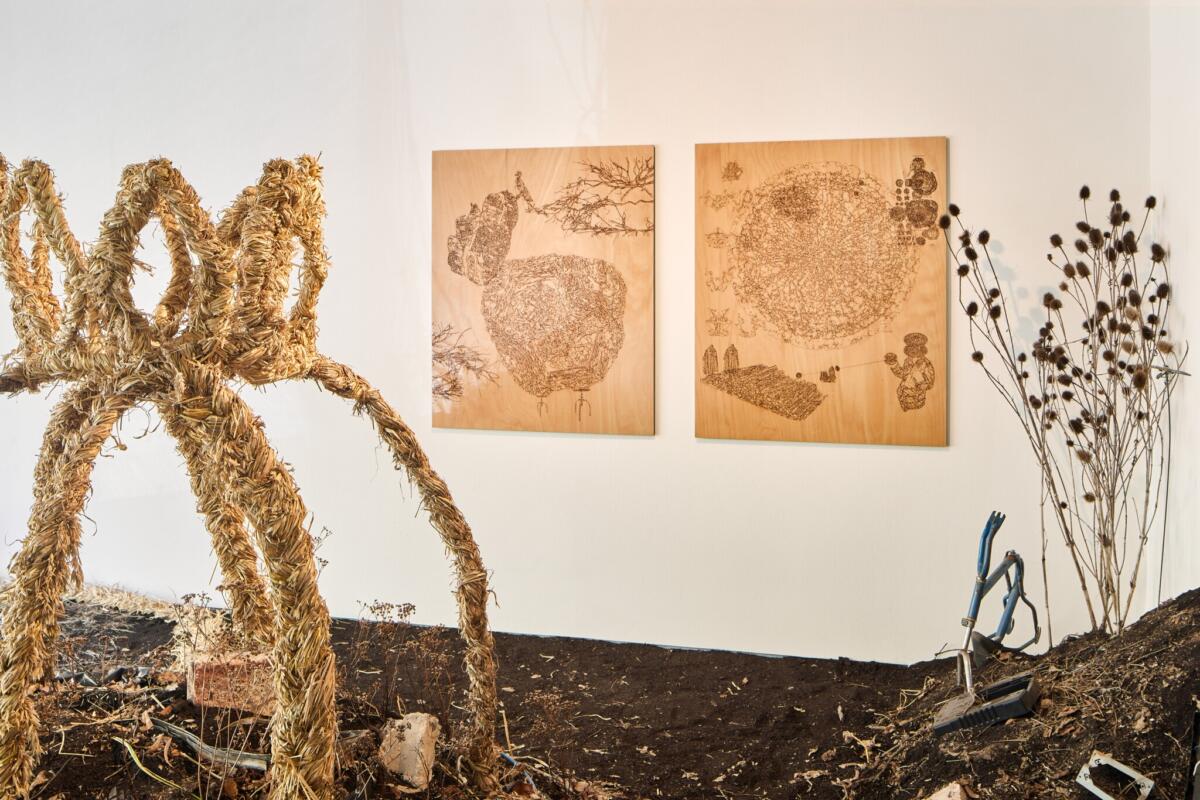

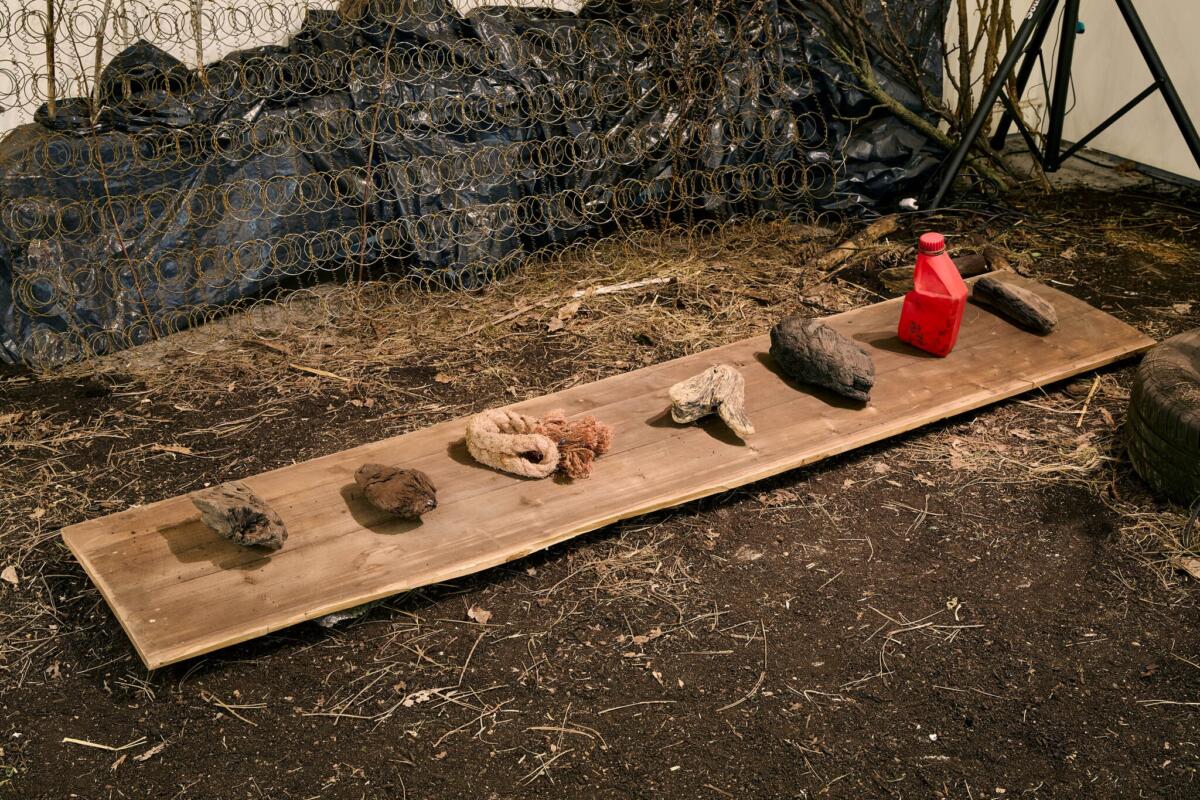
There is a warning at the entrance to Dump stating “the installation contains natural materials that can cause an allergic reaction.” To put it differently, this is not a place for deep-breathing exercises or meditation. Meanwhile, within this space, there are periodic bursts of music (Czech songs) by the visual artist Marie Tučková: one is a lullaby, Alder (2023), and a reaction of hers after a meditative session along the Vltava river; the other is titled Wet Scores for Listening (2022) as a two-voiced improvisation, and recorded in an underground sewer (a former wastewater treatment plant). Such unusual dynamics, tossed together with an array of unnatural materials such as stacks of old tires, bricks, plastic debris, auto-parts, rusty metal barrels blended in a “nature” so out of control, it can also cause an ecstatic reaction for art lovers who have a fetish for junk. Overall, it serves as a triumphant rebuttal to the long-gone critic who had dubbed Ságlová’s original installation a “Hay Dump.” Hay, Straw, Dump does have a dump, but one that has been transformed into an alchemical garden of earthly delights, of industrial refuse and undying nature.
Edited by Ewa Borysiewicz and Katie Zazenski
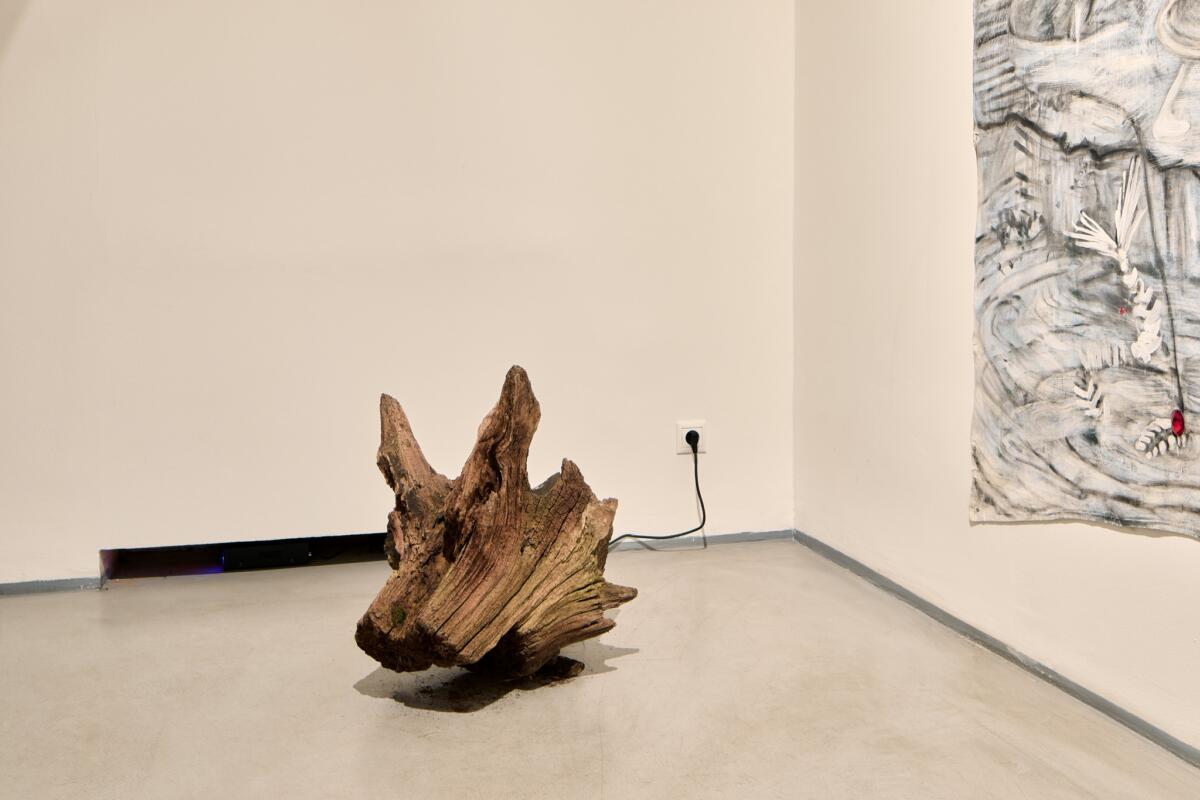
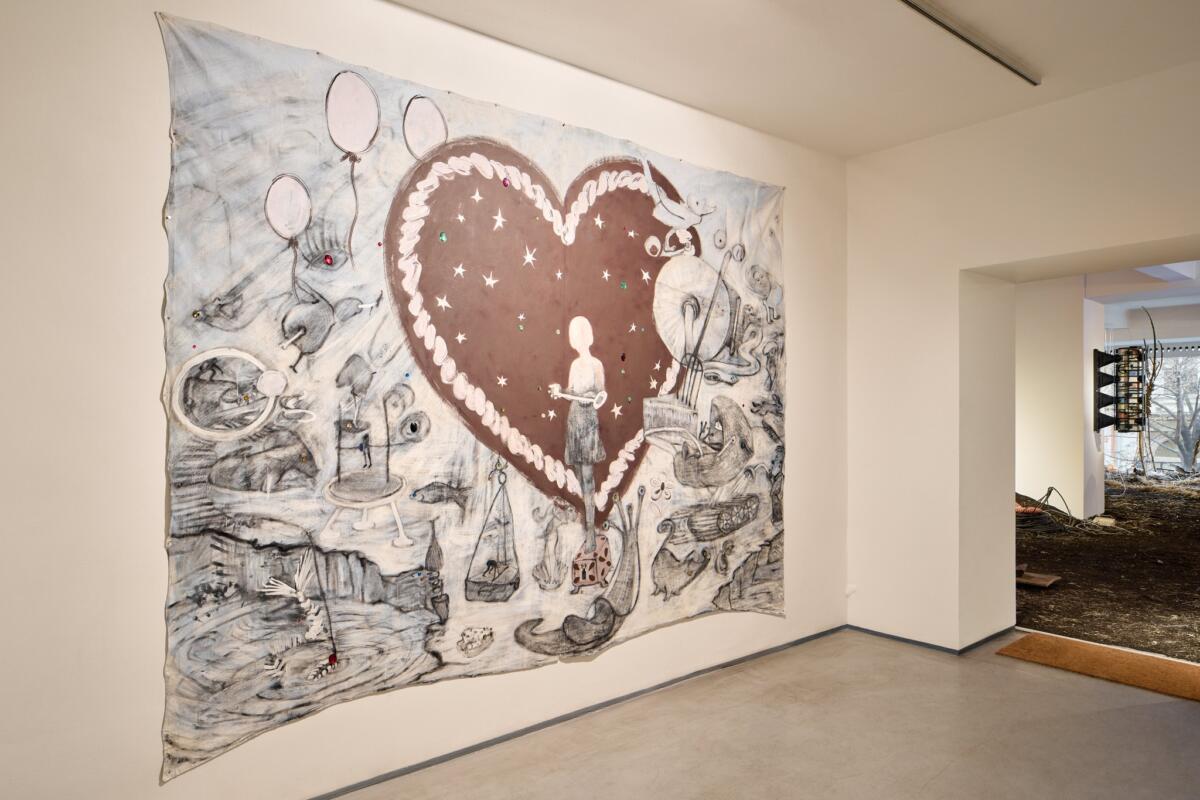
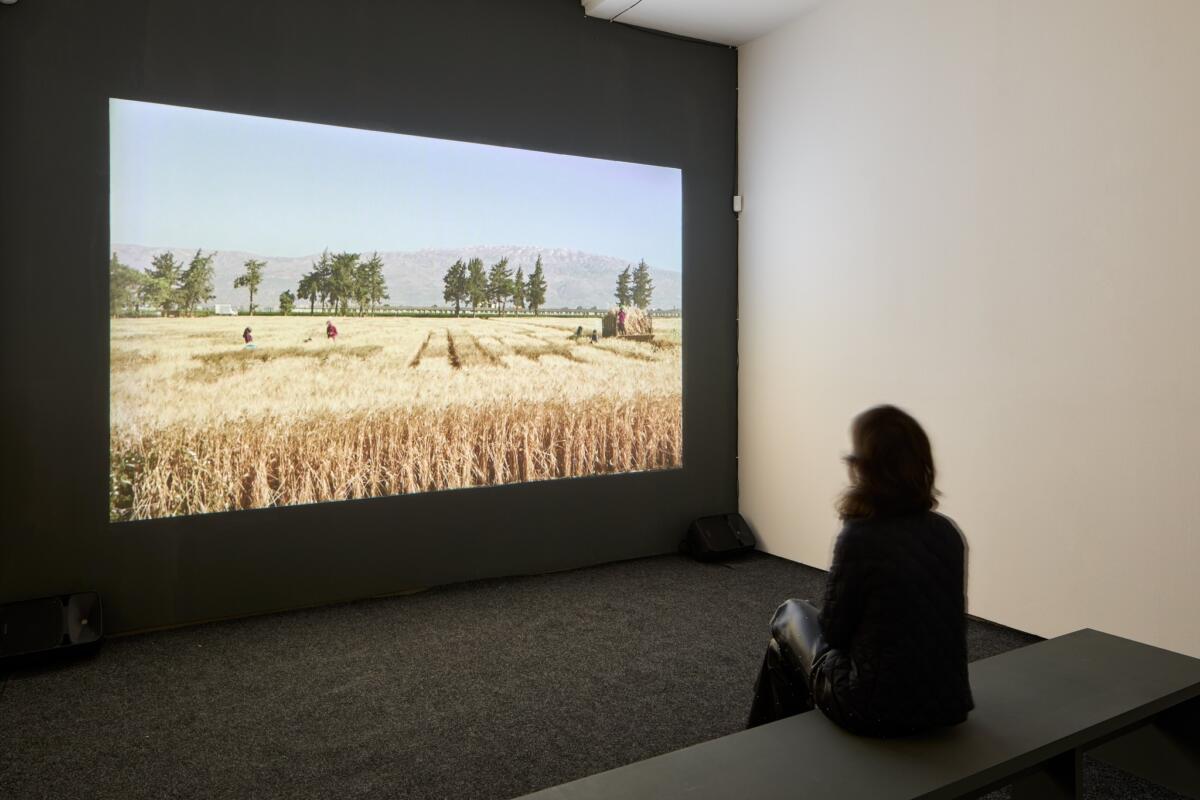
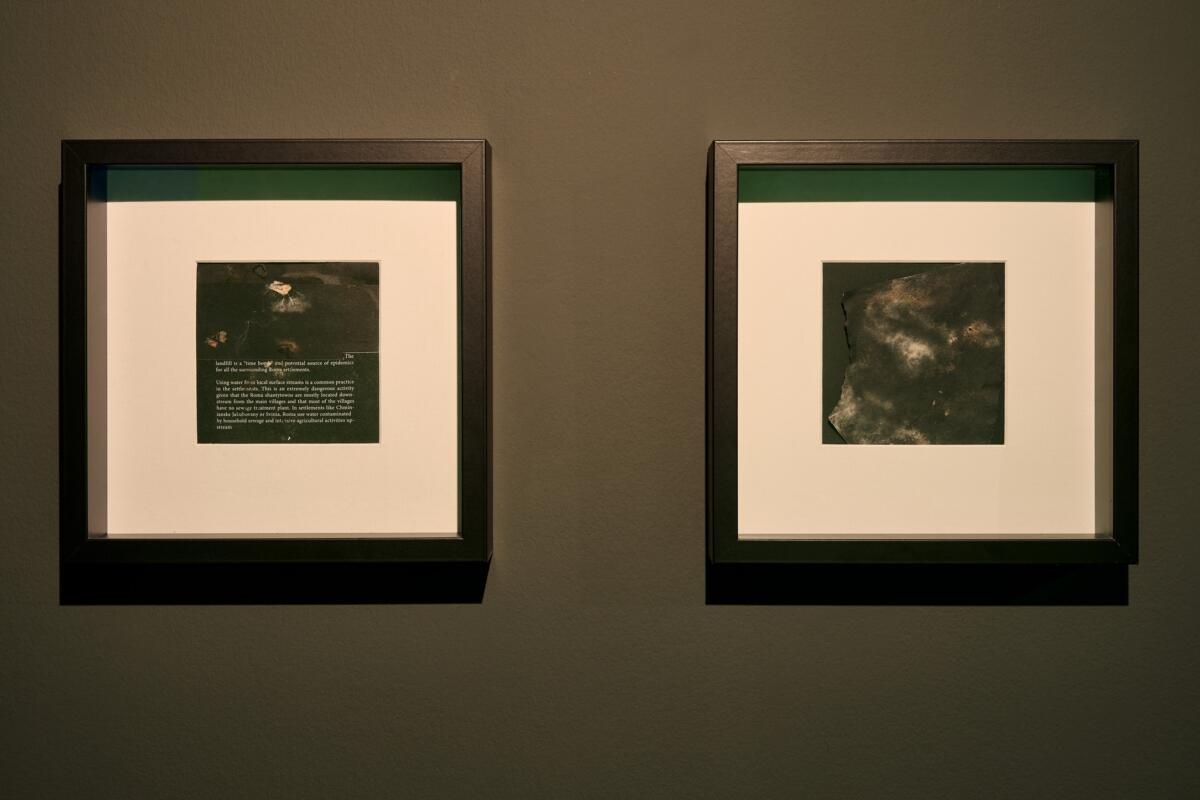
Tony Ozuna is art director and senior lecturer for the School of Journalism, Media & Visual Arts at Anglo-American University in Prague.
Imprint
| Artist | Anna Hulačová, Ruta Putramentaite, Martin Hurych, Tadeáš Polák, Ines Doujak, Jumana Manna, Tamara Moyzes & Shlomi Yaffe, Hanna-Maria Hammari, Diana Lolonek, Věra Kotlárová-Chovancova, Michal Kindernay, Dagmar Šubertová, Marie Tučková, Justyna Górowska & Ewelina Jarosz, David Vojtuš, Jakub Tajovský, Nicola Brabcová, and Petra Janda |
| Exhibition | Hay, Straw, Dump |
| Place / venue | Václav Špála Gallery |
| Dates | 29.03.2023 - 03.05.2023 |
| Curated by | The JCHS curatorial collective (Barbora Ciprová, Veronika Čechová, Tereza Jindrová, Karina Kottová) |
| Photos | Jan Kolský |
| Index | and Petra Janda Anna Hulačová Barbora Ciprová Dagmar Šubertová David Vojtuš Diana Lolonek Hanna-Maria Hammari Ines Doujak Jakub Tajovský Jindřich Chalupecký Society Jumana Manna Justyna Górowska & Ewelina Jarosz Karina Kottová Marie Tučková Martin Hurych Michal Kindernay Nicola Brabcová Ruta Putramentaite Tadeáš Polák Tamara Moyzes & Shlomi Yaffe Tereza Jindrová Václav Špála Gallery Věra Kotlárová-Chovancova Veronika Čechová |

